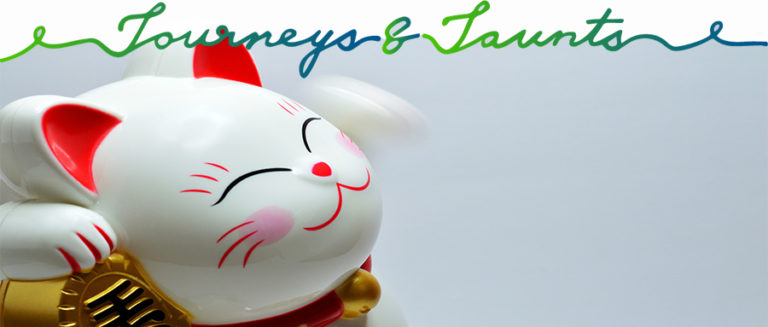Hong Kong – The Basics
Hong Kong is notorious for being one of the most expensive cities in the world. But, no matter your budget, you can still go there and have a lot of fun exploring it. Before we get down to the nitty gritty, though, let’s get our bearings and have a look at the basics first – here is an overview of the city’s climate, indispensable things on your packing list, the transport system, and the hygienic conditions you will encounter there.
The Climate
Hong Kong is in the tropics. If you have been considering a trip there, you will know this already. With this location come several challenges – or perks, depending on how you look at it.
The average temperature in Hong Kong is 23.5°C (with January being the coldest at an average of 16°C, and July and August tying for the hottest month at an average of 29°C). And as if that were not enough, the humidity is also off the charts. During the summer months, it feels like you are not so much breathing as you are drinking the air, it’s that humid. And stepping outside is like stepping into a Turkish bath. You stand there, doing nothing, and you can feel beads of moisture forming on your arms and the sweat equivalent of a good workout starting to pour from you.
Sounds gross? You bet it is. But these high temperatures also mean that Hong Kong is a great get-away if you need to escape howling winter winds, dreary gray autumns or springs that feel like they will never turn warm again.
Things You Should Not Forget to Pack
On top of being hot and humid, the weather is also very changeable. The bad part of this is that you are frequently rained on. The good part is, it hardly ever lasts. So even if rain is dripping down on you, don’t worry, the sun will be out again in no time, producing more steam bath atmosphere while drying up the puddles.
For either weather condition, rain or shine, bringing an umbrella with you wherever you go is a very good idea. Its use in rainy weather should be obvious, but an umbrella is also one of the most effective means of protection against the punishing rays of the sun. If hiding under it when it doesn’t even rain feels weird or unusual to you, don’t worry. Since the Asian beauty ideal is to be as fair as possible, yours won’t be the only umbrella in evidence during a sunny spell. In a bid for keeping the whitest skin possible, girls and women will unfold theirs as soon as the tiniest ray makes an appearance.
Hong Kong, along with Singapore and Kuala Lumpur, is one of the hottest places I have ever visited OUTside, but at the same time one of the coldest places I have ever visited INside. While the outside temperature for most of the year is scorching, the people of Hong Kong firmly believe in shock frosting themselves as soon as they enter a building. Rumor has it that there is an unofficial employer ranking system based on which firm provides the coldest office environment. Malls, government buildings, restaurants etc. do not want to be left behind and also turn their aircons down as far as they will go. This unfortunate frosty habit (to say nothing of its negative effects on the environment) means that your body needs to deal with severe temperature differences every time you enter or exit a building.
So, to ward off a runny/stuffy nose, sore throat and coughing fits – nothing worse than a cold to ruin your perfect vacation – do yourself a favor and bring something to cover up when you are inside. A windbreaker does not need a lot of packing space and will double as an impromptu rain jacket if you need it to. Another option is a hoodie with a zipper, so you can avoid the onion look and having to constantly put stuff on and taking it off again because of the temperature changes.
No matter the weather conditions, though, I always love to explore a city by walking it. There are few ways better to discover a place than to walk alongside its residents and “spy” on them while they go about their daily business. Alas, Hong Kong is a city of slopes. And hills. And freaking mountains. And stairs. Oh, so many stairs. So, if you plan on doing any walking there, good footwear is essential. On my last trip, I managed to rack up an impressive (if I say so myself) average of 28,000 steps a day, even though I took to the MTR quite a bit when I was feeling lazy exhausted. So – bring hiking boots. Or running shoes. Or some other form of sturdy footwear.
Hong Kong Transport
While walking around Hong Kong and contemplating its steep climbs (and while we are on the subject: why does it always feel like you walk UP the hill waaaay more than you walk DOWN the hill?), I frequently wish for an easier way around. So, when I get tired of hoofing it, I turn to the MTR to help me out.
The MTR is Hong Kong’s public transport provider that operates the trains, light rail, and buses crisscrossing the entire place, as well as cross-boarder commuting options to mainland China and the Airport Express. In addition to the MTR, one can also take the exciting double decker tramways, affectionately called Ding Dings by the locals, which are operated by the HK Tramways. Or you can take one of the ferries to the outlying islands. Three companies offer ferry services to the various possible destinations – Star Ferry, Hong Kong and Kowloon Ferry Holdings Ltd. (HKKF), and New World First Ferry Services Ltd. (First Ferry). Depending on your destination, you need to choose one of them, as not all of them offer all of the routes. For more information, check here.
The entirety of these transportation options can all be paid for by one single card – the Octopus card. This invaluable device is charged with a minimum of 50 HK$ and you swipe it when getting on – or, in the case of the tram – when getting off your means of transport of choice. I will go into further detail on how to get this card and how to use it in another article.
Hygiene
Compared to many other places I have been, Hong Kong is a very clean city. Wherever you are, you will see city workers in their light blue uniforms (usually with wide brimmed hats covered by flappy pieces of cloth to give them additional shade) busy picking up trash, pruning trees, bushes and shrubs by the roadside, emptying trash cans and just generally making sure the place stays spick-and-span.
The streets are not the only thing that’s clean in Hong Kong. Another pleasant surprise for me were the unexpectedly well-kept public bathrooms. Wherever you happen to be in the city’s commercial and/or touristy areas, a public bathroom is never very far off. There are clearly visible signs indicating how to get to the next one, and the facilities all have their dedicated cleaning person tending to them. The restrooms themselves are – if not quite sparkling – at least rather clean and even smell reasonably good.
I have had to go to much ranker places in some other parts of the globe that will stay unmentioned here. But come to think of it, they might merit their own post at some point. Tell me in the comments if you are interested in a “worst public toilets in the world” countdown type article.
But back to Hong Kong. In that city’s public bathrooms, you mostly get a choice between squat or sit-down style toilets. If this is the case, always always always choose the former. While the squatting might take a bit of practice if you are not used to it, it is so much more sanitary than toilet seats that may or may not have been wiped clean, and that may or may not accidentally touch some body part of yours. Trust me!
Another nice touch is that in Hong Kong, the public toilets I’ve been to all boasted toilet paper!!! If you have never traveled in Asia before, this statement (and my unmistakable enthusiasm about the fact) might surprise you. But it is so newsworthy because there are sooo many places with public restrooms where nary a piece of paper is to be found. In most parts of Asia (notably in mainland China, but others as well) it is strictly BYOTP* (*bring your own toilet paper) or go without. So imagine my relief when I discovered this unbelievable luxury of big rolls full of toilet paper, a lily white sea of papery goodness, streamers of soft layers of hygienic…but I digress.
I hope this has given you a good overview of what to expect when visiting Hong Kong for the first time. In the next part of this series on traveling to Hong Kong, I will introduce you to the best ways to waste money while you’re there. Forewarned is forearmed, as they say, so you don’t make the same mistakes I made my first time in Hong Kong, spending unnecessary sums on things that sound like a good idea, but aren’t.





Pingback: Journey to Hong Kong – Ways to Waste Money | Journeys & Jaunts